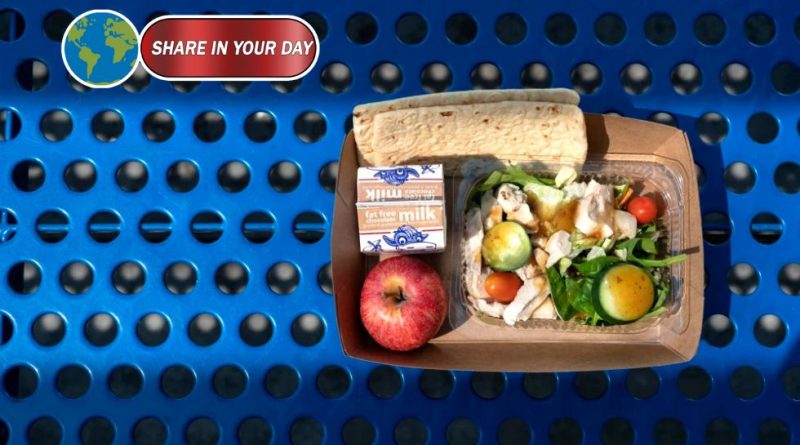California Becomes First State to Ban Ultraprocessed Food from School Meals
October 9, 2025
Los Angeles, CA — In a landmark move that positions California at the forefront of school nutrition reform, Governor Gavin Newsom on Wednesday signed a new law that will gradually phase ultraprocessed foods out of public school meals across the state — the first law of its kind in the United States.

The legislation, passed by California’s Democratic-majority Legislature with bipartisan support last month, targets foods linked to adverse health outcomes such as cancer, Type 2 diabetes, and heart disease. Under the law, schools will begin the phase-out process by 2029 and must fully comply by 2035.
“It’s a movement that should unite all of us, regardless of political stripes,” Newsom said during a signing ceremony held at Belvedere Middle School in Los Angeles.
A New Standard for School Nutrition
The new law defines “ultraprocessed foods of concern” as products containing additives like stabilizers, thickeners, artificial colorings, or non-nutritive sweeteners, combined with high levels of saturated fat, added sugar, or sodium. These foods are widely consumed in the U.S., particularly by children.
On average, children and teens in the U.S. receive nearly 62% of their daily calories from ultraprocessed foods — items that often bear little resemblance to their original, whole food ingredients.
But California’s law goes beyond general definitions. It requires the California Department of Public Health to assess which specific food products pose the greatest health risks. The department is tasked with publishing a list of banned items by June 2028, based on scientific studies, addictive potential, and existing international or state-level bans and warnings.
A Political and Parental Consensus
The bill’s author, Assemblymember Jesse Gabriel, a Democrat representing part of Los Angeles County, framed the issue as one of bipartisan concern among parents.
“There’s really a growing awareness, particularly among millennial parents like myself, about how what we feed our kids affects not just their physical health but also their mental and emotional well-being,” Gabriel told reporters.
Gabriel added that in school districts that have already moved toward healthier food options, the shift did not increase costs. In some cases, schools have even saved money by eliminating processed, packaged foods in favor of freshly prepared meals.
Setting a Precedent Nationwide
The move places California ahead of other states that have taken recent steps toward cleaning up school menus. Earlier this year, West Virginia and Texas passed laws banning certain artificial dyes and food additives in schools — legislation influenced by Health and Human Services Secretary Robert F. Kennedy Jr., whose “Make America Healthy Again” campaign has spotlighted school food as a key issue.
Still, Gabriel emphasized that California’s work on food safety predates Kennedy’s national efforts.
“We’ve been doing this work in California to protect kids’ health since before anyone ever heard of them,” he said.
Newsom echoed that sentiment during the signing event, pointing to California’s earlier controversies around banning certain candy ingredients.
“No one understood it when we started talking about Skittles,” the governor said. “Now everyone’s jumping over each other — Louisiana, all these conservative states — trying to get in on this, which is sort of interesting and I think wonderful at the same time.”
National Implications and Health Trends
The legislation arrives amid growing alarm from health experts about the impact of highly processed foods on child development. Recent studies have linked such diets not only to physical conditions like obesity and diabetes but also to mental health challenges such as depression and anxiety.
There is currently no federal standard for what constitutes an “ultraprocessed food,” making California’s approach — which sets a legal definition and science-based criteria — potentially influential beyond state lines.
Nutritionists and public health advocates hailed the move as a potential blueprint for national reform.
“This is a big step forward,” said Dr. Angela Mendez, a pediatric nutritionist at UCLA. “California is sending a strong message that children’s health is non-negotiable — and that schools can be part of the solution.”
What Happens Next?
Between now and 2028, California health authorities will begin evaluating common food items in school cafeterias, from frozen entrees and packaged snacks to sugary beverages. Once the list is released, public schools will have until 2035 to fully eliminate non-compliant products from breakfast and lunch programs.
In the meantime, state agencies are expected to assist school districts with the transition, providing training, sourcing guidance, and budget planning.
The law also builds on Newsom’s earlier executive order in January, which instructed state agencies to begin cracking down on artificial dyes and additives in public food services.
With this law, California continues to carve out a national leadership role on food safety and child health — one meal at a time.




